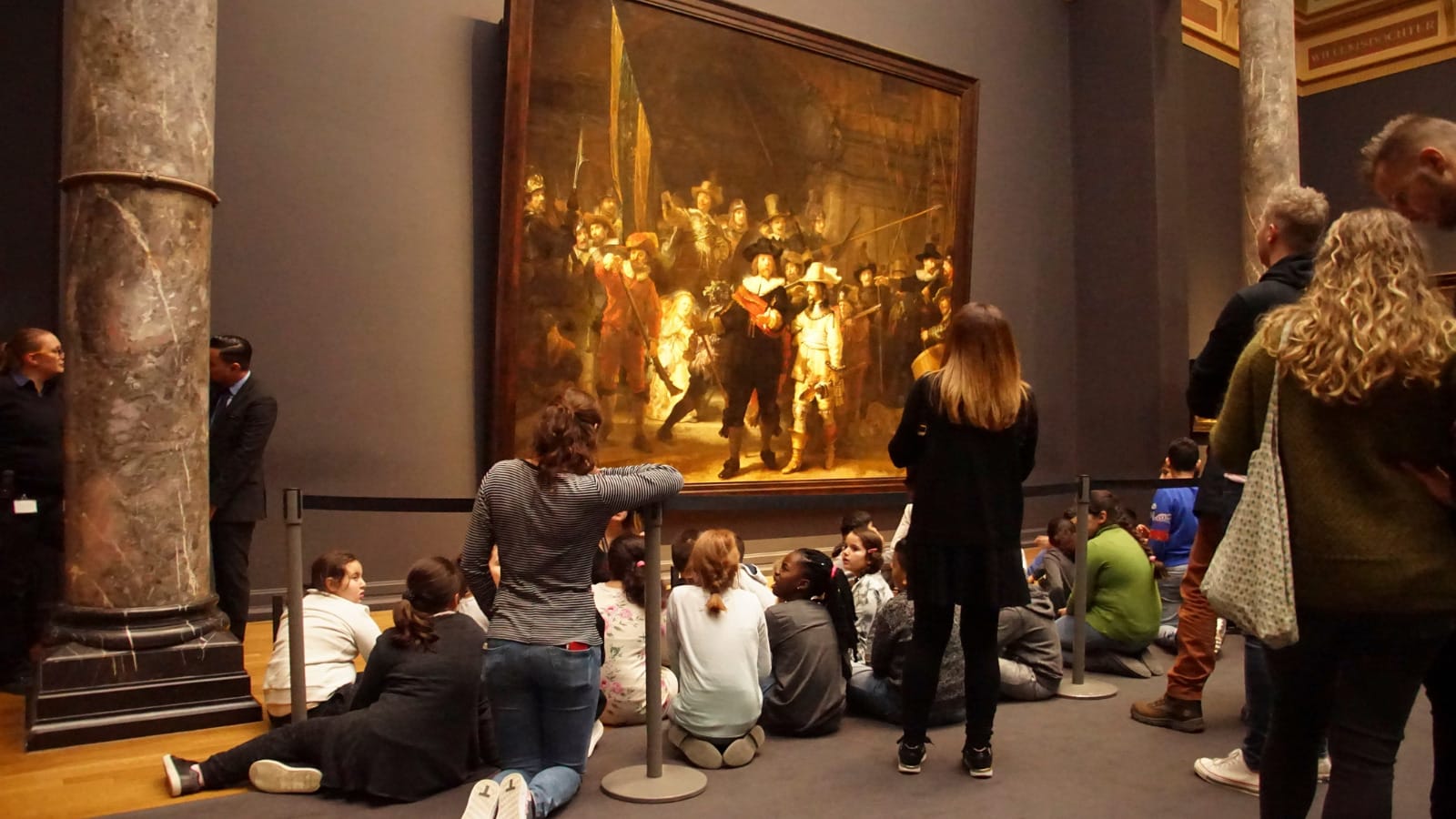If you try this activity with your students, we’d love to see what you do. Share your journey via the #Inspired2Learn hashtag on your preferred social platform.
Discipline: As described, this would be good for an ELA activity in which students are working on visual literacy but choosing the content students are looking at and developing expertise with you could technically adapt this for any subject area.
Age level: All (with some adaptions for younger students)
Materials: Art images (can be found on most museum sites) Also, this activity would be amazing on a field trip to an art museum! Here is a sample of pieces.
Time: At least one 45-minute class period.
Art appreciation is about observation, learning what you can about a piece, and noticing what stands out to you. In this activity, students will be doing all of that and then sharing what they learn with their peers. This act of discussing art from one’s own position as an observer, and learner, builds mutual respect by positioning the student as an emerging expert and giving them space to share their growing expertise.

What do to:
- Explain to students that they are going to develop some expertise in understanding pieces of art. Art appreciation is about observation, learning what you can about a piece, and noticing what stands out to you. In this activity, they’ll be doing all of that and then sharing what they learn with their peers.
- Offer a wide variety of artworks students can study and let them choose one that speaks to them. Examples can be found in this slide deck with images pulled from Smithsonian websites. This activity would be amazing if students studied pieces ahead of time and then went to an actual museum with the pieces on display to present their talks.
- Invite students to spend at least 10 minutes (yes, that is a long time!) observing the piece, reading about the artist, and coming up with the following which they will share with the rest of the group after their period of reflection.
- What stands out to you about this piece?
- What you noticed after studying it for a long time that you didn’t see at first.
- What we should know about the artist.
- A question you want us to ponder and respond to after looking at the piece.
- Once 10 minutes are up bring the group together and have each student share, being sure to have them ask their final questions so the full class stays engaged.
- After all presentations are over ask the class:
- What did you learn as the expert on your particular piece of art?
- What was it like to share the piece with others?
- What did you learn from what others shared?
How this activity builds mutual respect:
Choice is involved in everything from picking a piece to choosing what to share and ask in students’ presentations – this involves decision-making and self-management. When students share out their learning they demonstrate that they know things that the rest of the class doesn’t and that builds their respect for each other. Thoughtfully preparing questions and the presentation shows respect for peers. Mutual respect is kind of radical in the context of traditional school relationships because it suggests that we don’t respect the teacher more than the students – that respect may look different – what I talk with my teacher about may be different from what I talk with my peers about – but my teacher respects me as a thinking capable human and I do the same for them.
Standards Addressed by these Activities
Common Core College and Career Readiness Anchor Standards for Language
CCSS.ELA-LITERACY.CCRA.L.1 Demonstrate command of the conventions of standard English grammar and usage when writing or speaking.
Vocabulary Acquisition and Use:
CCSS.ELA-LITERACY.CCRA.L.6 Acquire and use accurately a range of general academic and domain-specific words and phrases sufficient for reading, writing, speaking, and listening at the college and career readiness level; demonstrate independence in gathering vocabulary knowledge when encountering an unknown term important to comprehension or expression.
Common Core College and Career Readiness Anchor Standards for Writing
CCSS.ELA-LITERACY.CCRA.W.1 Write arguments to support claims in an analysis of substantive topics or texts using valid reasoning and relevant and sufficient evidence.
Common Core College and Career Readiness Anchor Standards for Speaking and Listening
CCSS.ELA-LITERACY.CCRA.SL.1 Prepare for and participate effectively in a range of conversations and collaborations with diverse partners, building on others’ ideas and expressing their own clearly and persuasively.
Presentation of Knowledge and Ideas:
CCSS.ELA-LITERACY.CCRA.SL.4 Present information, findings, and supporting evidence such that listeners can follow the line of reasoning and the organization, development, and style are appropriate to task, purpose, and audience.
Collaborative for Academic, Social, and Emotional Learning Competencies
Self-management: The abilities to manage one’s emotions, thoughts, and behaviors effectively in different situations and to achieve goals and aspirations. This includes the capacities to delay gratification, manage stress, and feel motivation and agency to accomplish personal and collective goals.
Social awareness: The abilities to understand the perspectives of and empathize with others, including those from diverse backgrounds, cultures, and contexts. This includes the capacities to feel compassion for others, understand broader historical and social norms for behavior in different settings, and recognize family, school, and community resources and supports.
Responsible decision-making: The abilities to make caring and constructive choices about personal behavior and social interactions across diverse situations. This includes the capacities to consider ethical standards and safety concerns, and to evaluate the benefits and consequences of various actions for personal, social, and collective well-being.
Relationship skills: The abilities to establish and maintain healthy and supportive relationships and to effectively navigate settings with diverse individuals and groups. This includes the capacities to communicate clearly, listen actively, cooperate, work collaboratively to problem solve and negotiate conflict constructively, navigate settings with differing social and cultural demands and opportunities, provide leadership, and seek or offer help when needed.
